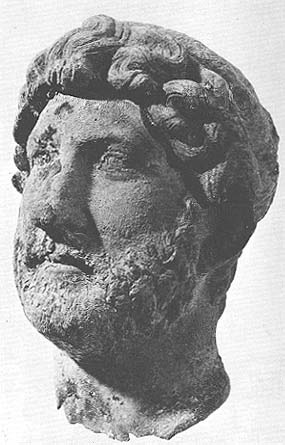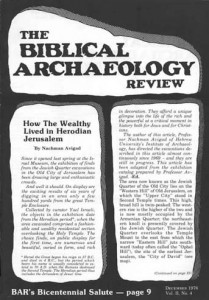
Shortly after major pieces of an extraordinary bronze statue had been dug up illegally by an American tourist, Gideon Foerster of the Israel Department of Antiquities received an urgent call from a former student describing the find. The tourist, an American named Morton Leventhal, had been wandering around with a metal detector looking for ancient coins. When the metal detector indicated that metal lay beneath the ground, Leventhal took a spade and discovered two feet below the ground the head, torso, and other portions of a larger than life bronze statue of an armored emperor. Leventhal left the pieces at a nearby kibbutz. The next day Foerster arrived at the kibbutz, where his former student lived. There he saw the statue propped up in a showcase of the dining room. From the first moment, said Foerster, I recognized the face of Hadrian.
The features are known from many coins and marble statues. The bearded head in the showcase was clearly Hadrian, Emperor of the Romans, suppressor of the second revolt of the Jews led by Bar Kokhba against the Romans. Although the features were familiar and the type of statue well-known in marble from the Hellenistic world, the fact that this was a bronze armorclad Hadrian made it an almost unique discovery. Bronze, unlike marble, can be melted and recast. It is not surprising then that few bronze statues have survived almost 2000 years. And of the bronze statues that have been preserved, only two of uncertain attribution may be of Hadrianone, a head dredged from the River Thames some hundred years ago.
Already a library member? Log in here.
Institution user? Log in with your IP address.

